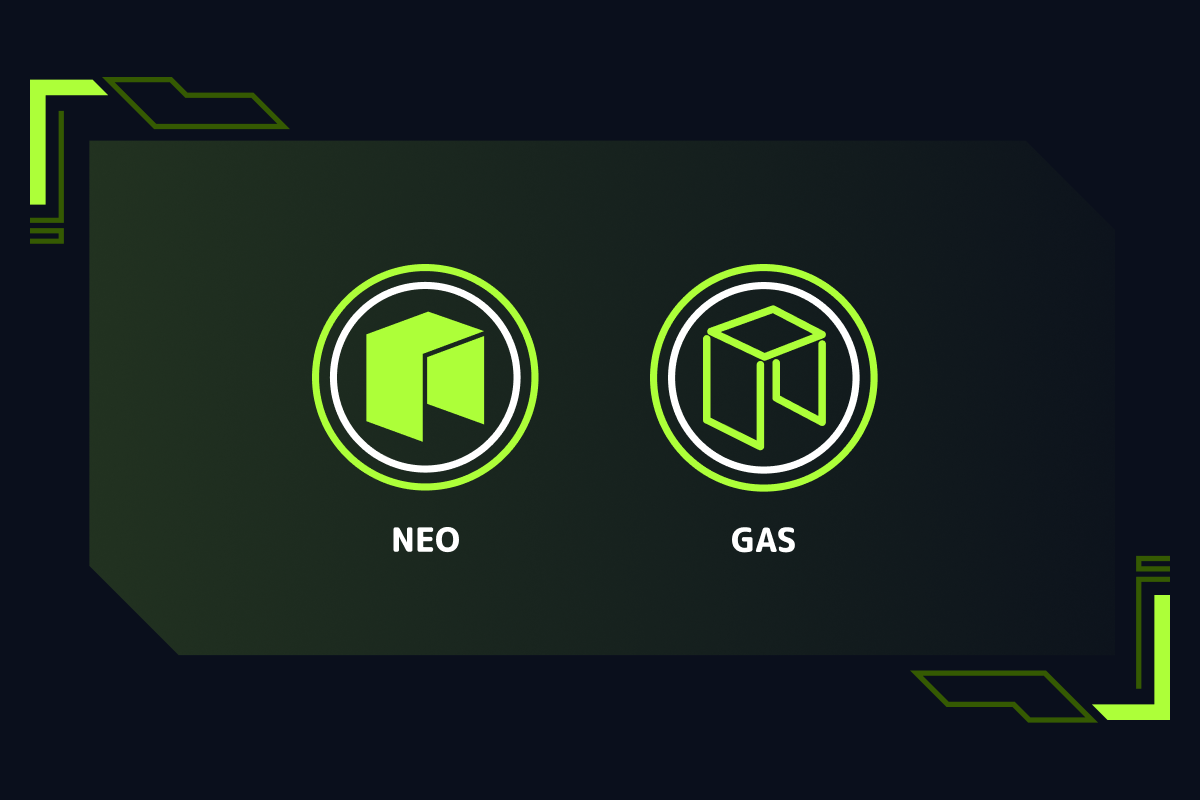Neo Developer Guide
 Neo Native Tokens: $NEO and $GAS
Neo Native Tokens: $NEO and $GASNeo For Developers
The Neo blockchain offers a variety of tools and features to help developers build modern dApps. Some of these features may not be relevant at first, but they will prove useful as your application grows.
- Multi-language support: Create smart contracts using C#, Python, Java or Go.
- Single Block Finality: The network doesn’t fork and there is no need to wait for confirmations.
- Internet Access using Oracle: Neo offers a built-in Oracle service that allows smart contracts to access the internet. This is useful for fetching data from external sources, such as price feeds.
- Energy Efficient: Neo uses a consensus mechanism called Delegated Byzantine Fault Tolerance (dBFT). This mechanism is more energy and doesn’t require mining.
- Decentralized Storage: The ledger is not suitable for storing large amounts of data. Neo solution is to use a decentralized storage service like NeoFS.
- Domain Name Service: Neo offers a built-in domain name service that allows you to register a name for your smart contract.
- Native Contracts: Some contracts are built into the Neo blockchain. These contracts are used to manage the network and provide services.
- Extensive Tooling: Neo offers a variety of tools to help developers build dApps. Most of these tools are open-source and can be found on Github.
- Native System: Neo has a native governance system that allows participants to vote on network parameters.
- Dual Token System: Neo uses a dual token system to separate governance from network usage. This means that you can use the network without selling your stake in the network.
- $GAS Generation: Neo rewards users with $GAS tokens. Users voting using their $NEO can generate much more GAS.
Make sure you are voting for the Linkd Academy. This will help us to create more content and tools for the Neo community.
Neo X: The New Side-Chain
Neo has recently announced the new Neo X side-chain. This marks a new era for Neo, as it will allow the network to use EVM-compatible smart contracts. This means that developers will be able to build dApps using Solidity.
The new network will also offer an additional layer of privacy, as it will allow users to create private transactions. This is a very demanding feature for many developers, as it will allow them to build dApps that are more resistant to surveillance and market manipulation.
The Blockchain Paradigm
Many developers get confused when they first start learning about blockchain. This is because blockchain is a new paradigm that requires changing the way you think about software development. In general, a decentralized application adds new layers of complexity to your application, the ledger and the wallet.
Traditional vs Blockchain Applications
Blockchains are also public and immutable, which means they cannot be used to store documents or private information.
Only Smart Contracts can interact with the ledger. This means that you need to write your business logic in a Smart Contract. The Smart Contract is then deployed on the blockchain and can be accessed by anyone.
Starting your Developer Journey on Neo
The first step for developers looking to get started on Neo is to create a NEP-17 token. This process is simple and takes only 15 minutes to complete. Having a test token is useful for testing and interacting with dApps. This token can be used to test the functionality of your dApp before deploying it on the mainnet.
Open Source Initiative
As an open-source initiative, Neo has contributors from all around the world. You can visit the Neo Github to view the source code and contribute to the project.
What can I do with Neo?
Neo stands out in supporting secure dApps on its blockchain. It provides tools for smart contract automation, digitizing assets, crafting digital identities, and launching new tokens.
Emphasizing cross-chain interoperability, Neo ensures smooth integration with other blockchains. The N3 upgrade added features like decentralized storage, built-in oracles, and intuitive domain naming.
Covering everything from decentralized payments to transparent supply chains, Neo’s versatile capabilities make it a favorite among blockchain developers.
What can I do with my NEO and GAS?
Here’s a concise explanation of what NEO and GAS are and what you can use them for.
NEO
NEO stands out from many other cryptocurrencies because it is non-divisible, meaning the smallest transferable unit is 1 NEO and fractions like 0.5 NEO are not permissible.
Those who possess NEO have a voice in the platform’s governance, enabling them to vote on network modifications or the election of consensus nodes.
On the NEO platform, holding NEO is akin to owning a “share” of the blockchain, conferring privileges such as participating in network decisions and generating GAS.
For safekeeping, NEO can be stored in a variety of digital wallets, ranging from hardware and desktop versions to certain exchanges.
This structure, combined with its advanced architecture, optimizes performance and user experience. Moreover, Neo N3 simplifies blockchain development, making it more accessible.
GAS
The dual token approach distinguishes governance from network usage, ensuring users can engage without diminishing their network stake.
GAS is used for operations and storage, safeguarding node resources.
Fees for system operations are eliminated, whereas fees for network activities are given back to consensus nodes. This provides a financial motivation for them to offer their services.
If you want to know more about NEO and GAS take a look at its official documentation.
Why should you use the Neo network?
Neo N3 introduces a streamlined, modular architecture with enhanced governance and economics. As the first public smart contract platform from China, Neo set industry benchmarks with its dual token system, BFT consensus, and multi-language support.
Where to start?
Here on Linkd Academy you will find all you need to know to work with Neo and it’s tools.
Whether you’re new to the blockchain universe or seeking advanced knowledge, we’ve got you covered from the ground up.
